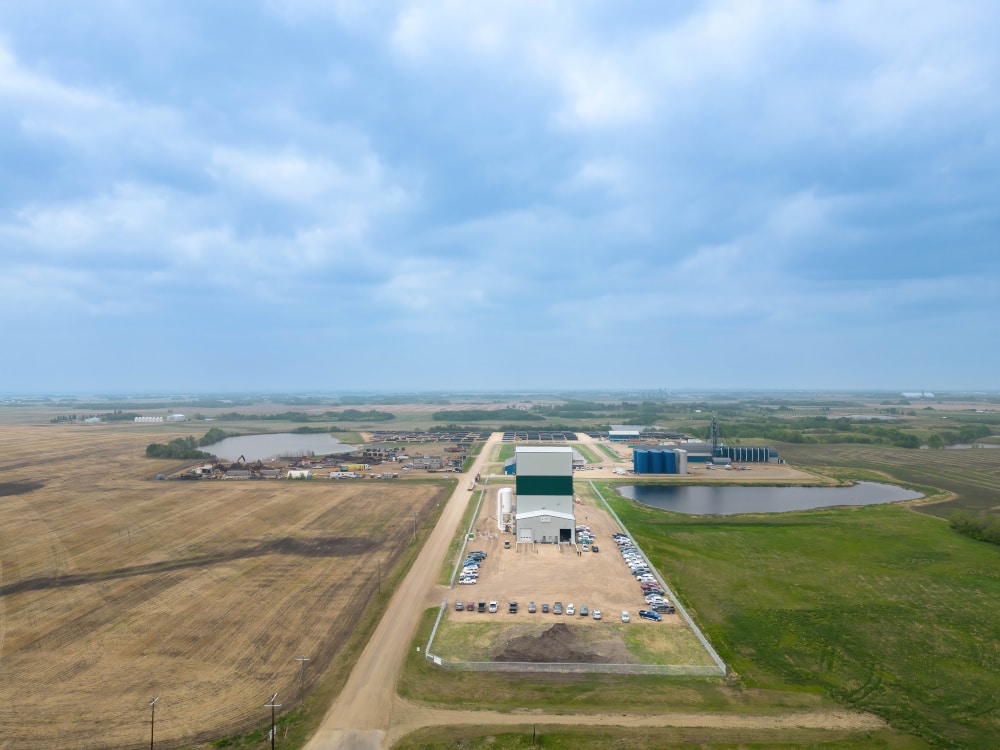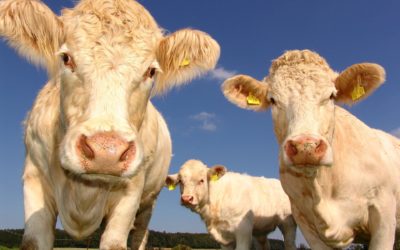A lot has changed since the Camrose County Seed Cleaning Plant was built. Where grain trucks were once used to haul grain and seed, it’s now all hauled by large semis. Seed cleaning systems are now run through computer programs — something that didn’t exist when the original plant was built. So it’s not too surprising the team at the Camrose Seed Cleaning Plant decided to build a new plant that could keep up to the changing times.
“Farmers kind of outgrew us being right inside Camrose. Going from a plant that was built back in the day when single axles were the truck of choice to super B’s, and sharing a lot with the Battle River School Division with all the school buses, traffic was a nightmare,” Murray Van Petten, Camrose County Seed Cleaning Plant manager, explains in a phone interview.
The Camrose County Seed Cleaning Plant was originally built in 1948. At the time, the community realized the need for grain cleaning services in the region and had started out two years earlier cleaning and storing grain in the old army drill hall. From there, the plans for the plant were made and a $10,000 grant from the province was received to build the plant.
From the start, Camrose County owned and operated the plant. The intial $10,000 provincial government grant accounted for a third of the construction costs with the rest being covered by the local municipal government. Through the county’s Agricultural Service Board, it has operated the plant since it was first built.
In 1963, a new plant was built and opened. Over the years upgrades and expansions were made to the plant with new services added such as seed cleaning and separation services. Operations continued at this plant until construction on the new, and now current, plant were completed in December 2022.
The idea for the new plant was first thought up in 2019. At that time Van Petten and the county Chief Administrative Officer Paul King along with the Agricultural Service Board approached the county council with the idea for the new plant. They had done the initial planning work which included picking a potential new location on county land, and a budget plan for it with a five-year construction timeline.
“I was ecstatic that we were planning to build the seed cleaning plant. There’d been some slight discussions and stuff,” Cindy Trautman, current Camrose County reeve and a councilor in 2019, says in a phone interview. The seed old seed plant was located in “quite a congested area. So the plans started and thoughts were there and council was 100 per cent behind the idea.”
The location for the new plant along Highway 56 and south of Highway 13 was strategic. It was on land already owned by the county and between three major grain terminals and crop input companies.
“It’s more of an agricultural hub out here now. We can target more of the farmers if they’re selling grain right off the fields or throughout the year,” Van Pettan says.
Over the next few years the new plant was built. There were some hiccups with construction during the pandemic. Costs rose after steel prices increased due to inflation but the county was able to pre-purcase most of the steel and electrical components keeping costs overall lower. Most of the new machines were prepurcahsed in advance so there weren’t any delays with installation, but they did have to wait for the springs for the overhead doors to arrive.
Even with the delays, construction was completed two years ahead of schedule. The doors to the new plant were officially opened in January 2023. The seed plant teem of Van Petten, Travis Hillaby and Troy Hellekson started testing the new plant and its cleaning systems in December 2022. The doors on the old plant were closed in Novement 2022 in order to allow the team time to adjust to the new plant before starting full cleaning services at it.
“It was the right time of year to make [the move]. It would have been ideal if we could have been doing that transition in June or July. But next to that, [it’s best] if you’re doing that over the Christmas break,” Van Petten explains. “Not a lot of guys like to clean grain through Christmas and New Year’s … [so] it made the transition probably as smooth as possible. And then with the increased capacity of this plant, we were able to catch up rather quickly.”
The new plant has an estimated annual seed cleaning capacity of 800,000 bushels per year with room for increased annual capacity. It can clean 600 to 700 bushel per hour. While the old plant was also cleaning around 800,000 bushels per year, it only had a capacity of 400 bushels per hour making for much longer work days to get all of the seed through the plant. The new plant has two 100-foot scales that are capable of receiving and loading simultaneously, and can easily handle super B’s, with unload times of around 20 minutes. It also has a new USC High Capacity LPV Treating System which weighs the grain as it enters the treater and weighs the seed protectant and/or inoculant as it is applied.
A major upgrade for the plant is the automation technology. The scales are computerized and linked to the plant’s billing software. The plant’s operating system allows for all equipment to be started from the office and for the levels of each bin to be monitored remotely. There are also alarms to notify of hazards, all of the bins have automatic electric gates, and the camera system covers the full plant floor.
The new automation also allows for the plant’s administrative assistant, Jodie Bogstie, to work offsite and still be able to monitor and receive all information she needs to run the plant’s administrative work. Bogstie splits her work time between the plant and the Agricultural Service Board. Whereas she worked on site at the old plant, she now works off site.
“I have not heard a single complaint from anybody who is bringing seed in. The process is so quick — it’s twice the capacity and the speed has been phenomenal. I think it’s been pretty seamless. We’re very happy,” Trautman says.
The new plant is meant to handle expansion, Van Petten adds. He explains they’re happy to be able to now give farmers in the area easier access to the plant and also have the room to expand operations if needed.





